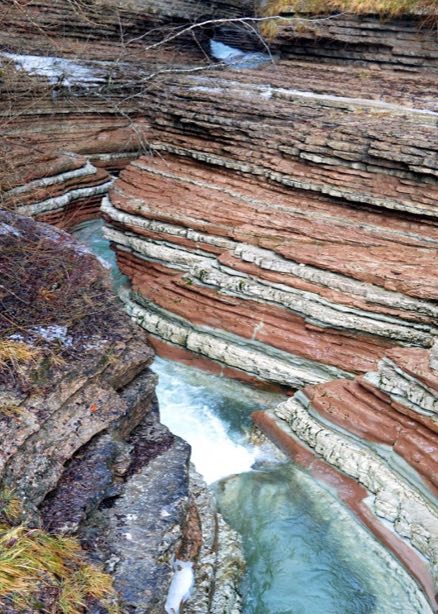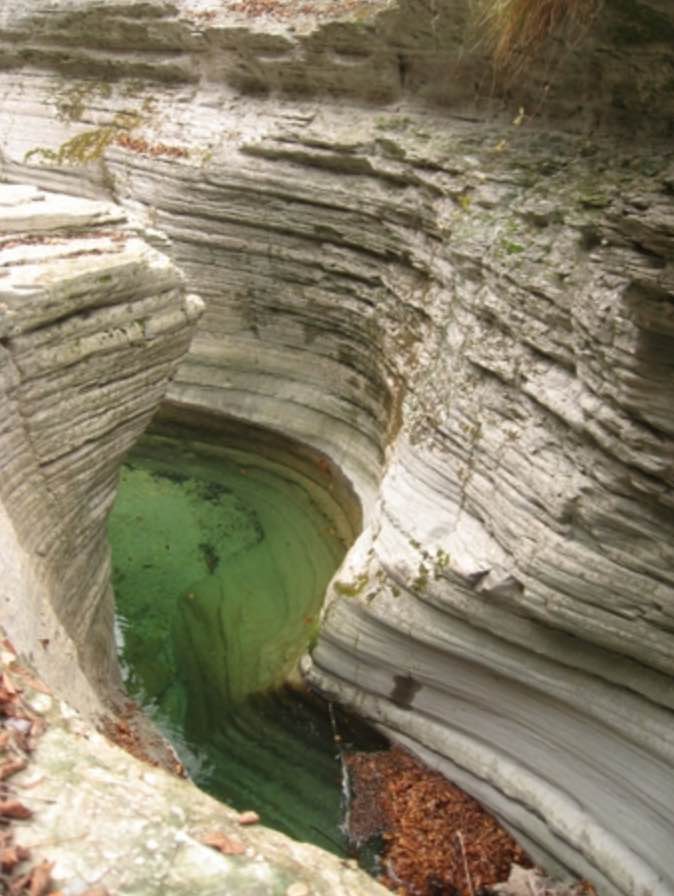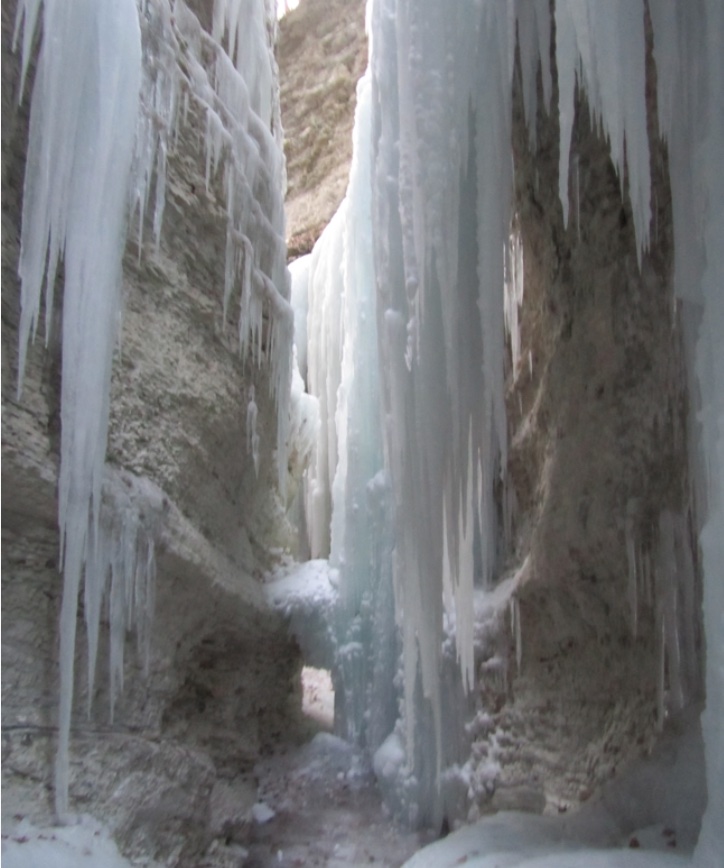In winter, large ice flows descend from the rock of the canyons similar to suggestive stalactites. In summer, the water of the stream swirls between narrow limestone walls that turn from red, to white, to gray-green. It's a truly spectacular walk the excursion to the canyons of Brent de l'Art, in Valbelluna, on the border between the provinces of Belluno and of Treviso.

Nor is it necessary to make too much effort to visit this spectacle of nature "built" by the waters of the Ardo stream, a tributary of the Piave river which in these parts takes the dialectal name of Art because it flows in a narrow rocky gorge. A dialect term is also Brent, which in the towns of Valbelluna indicates a torrential watercourse that flows at the bottom of a very narrow and very deep valley. This is why this fascinating natural environment is called Brent de l'Art. Fascinating and until a few years ago little known.
A history of millions of years behind this spectacle of nature
The area is not among the most touristic of the Belluno mountains. The great peaks are missing, but nature has nevertheless left an important trace the result of thousands of years of erosion by water that in his incessant work has brought to light layers of rock formed millions of years ago. These layers are characterized above all by the red color due to the presence of what is known as the Cretaceous Red Scale. A marine sedimentary rock of a calcareous type and therefore easily subject to the phenomenon of erosion. It was formed between 90 and 65 million years ago.

Its brick red color derives from the presence of iron oxides, but fossil shells of marine invertebrates have also mixed with its mud. This color is interspersed with more whitish layers of rock and others characterized by red but also gray-green clays. The final result of these geological features is represented not only by a visual effect of great impact but also from perception of how time has worked on these rocks thanks to the erosive action of water.
The Art torrent between gorges and narrow rocky walls
For thousands of years, the water of Art has carried the debris it collects along its path. Stones and plant residues wedge themselves into these gorges and crash against the rock walls, eroding it and bringing to light the ancient stratifications that give the Brent de l'Art its typical and extraordinary colors.

The erosion and excavation actions probably started from an ice age that ended nine or ten thousand years before Christ, and still continue, albeit very weakly. In all this, the torrential waters of the Art that run through these canyons are of great visual impact but also sound. Their noise is in fact amplified by the narrow and closed spaces of the rocky walls in which they flow. A natural context of great environmental and landscape impact.
In the Brent summer and winter excursions, but also simple walks
The Brent dell'Art can be reached starting from the small town of Sant'Antonio Tortal in the Municipality of Borgo Valbelluna, in the province of Belluno, through a steep descent (which takes about ten minutes) until you reach the Brent bridge. From here you can admire the mouth of the Great Brent in all its beauty. The Brent bridge it deserves to be remembered because it was rebuilt in recent times, after the great flood of 1966 that had destroyed it. As the Pro Loco di Trichiana recalls, in the past it was widely used because it was an indispensable transit and connection route between the residential settlements in the upper part of the neighboring municipalities of Mel and Trichiana. In ancient times, the transit of the bridge was subject to duties. And it often happened that the passage took place at night to avoid paying these taxes, even in the case of funerals.

Visiting the Brent de l'Art can be a simple walk, first downhill and then uphill. When you get down, the sight is truly majestic. In summer, accompanied by specialized mountain guides, there is the possibility of swimming across them. In winter, if the temperature is low enough and always accompanied by guides, you can go on the ice as far as the furthest bends from the bridge.
(ph credit Pro Loco Trichiana)




